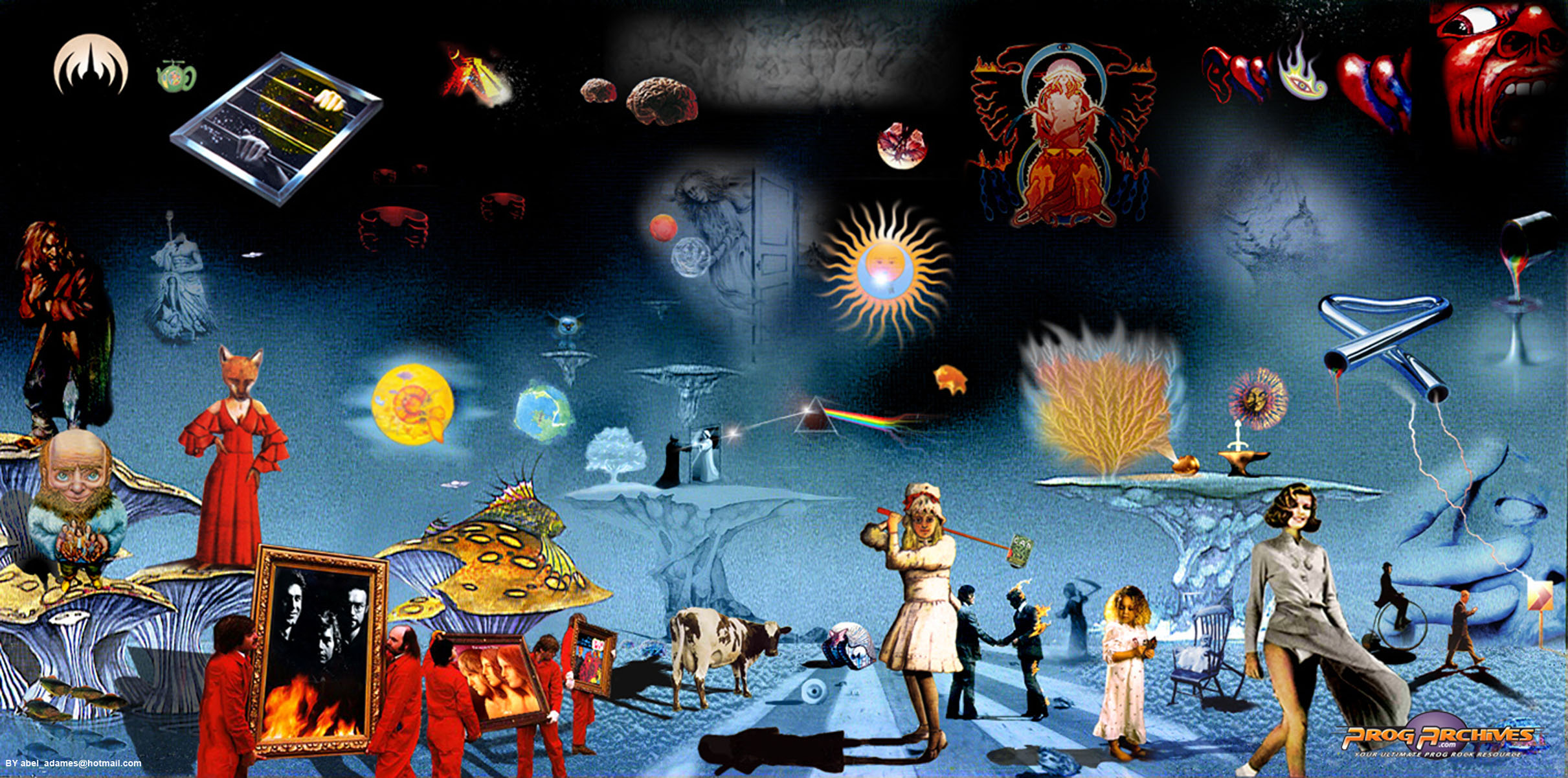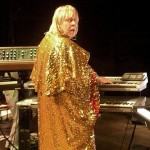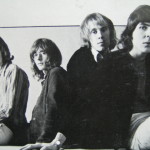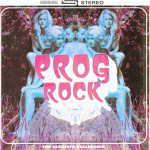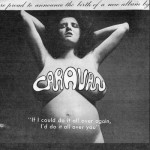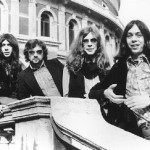I grew up with “prog rock,” a brand of music known, to give it its full title as “progressive rock” but which to the cognoscenti covered a broad range. A definition from the Wikipedia page on this phenomenon:
Progressive rock, also known as prog rock or prog, is a rock music subgenre that originated in the United Kingdom, with further developments in Germany, Italy, and France, throughout the mid-to-late 1960s and 1970s. It developed from psychedelic pop (rather than psychedelic rock, as is often stated) and originated, similarly to art rock, as an attempt to give greater artistic weight and credibility to rock music. Bands abandoned the short pop single in favor of instrumentation and compositional techniques more frequently associated with jazz or classical music in an effort to give rock music the same level of musical sophistication and critical respect. Songs were replaced by musical suites that often stretched to 20 or 40 minutes in length and contained symphonic influences, extended musical themes, philosophical lyrics and complex orchestrations. The genre was not without criticism, however, as some reviewers found the concepts “pretentious” and the sounds “pompous” and “overblown”.
Until the prog rock elders, “dinosaurs” as they were known, were blown away by the fresh new broom of punk and new wave in the late 70s and early 80s, that is, and rock returned to the fresh, simple and rebellious 3-minute format of yore. The maestros of excess either adapted to the changing times, carried on doing the same things into increasing cult obscurity, packed it in and gave up, or found new careers as session musicians and producers – but their audience lived on and still does to this day.
As a teen my tastes grew ever more sophisticated as my school friends educated me, I slowly ditched other tastes and got into the likes of Genesis, ELP/The Nice, Pink Floyd, then experimented further towards the periphery with the aid of albums borrowed from Wilmslow library (my mother worked there) – Jethro Tull, King Crimson, Greenslade, Camel, Caravan and the Canterbury scene (Hatfield and the North, Henry Cow etc.), Family, Focus, Strawbs, PFM, Supertramp, Renaissance, Gryphon, Rick Wakeman to some extent (though I did not personally go for Yes, who I felt to be dull and unimpressive), SAHB and a bunch more (see a full list here.)
As I first became interested in music in the early 70s this was not the music I heard at home – which was much more likely to be a combination of light classics and east listening of the Lena Martell, Perry Como, Shirley Bassey ilk – certainly not to my taste. By contrast the music I played on my tinny mono record player and on tinnier cassette recordings was, even in its less than perfect rendition, exciting, complex, intellectually stimulating, musically talented on a par with many classical performers.
Some tracks were fairly conventional, but others, especially the ones verging on psychedelia, were mind-expanding without the need for drugs and, to my impressionable mind, commanded awe. Take Papillon by Refugee (a favourite of my mate Nigel) – a catchy hook but then taking off into left field with a host of bizarre sounds created by slowing down and speeding up keyboard instruments and guitars to give an effect certainly reminiscent of the movie from which the track was inspired.
Given that digital technology did not exist, skilled production engineers were finding innovative ways to create extraordinary effects, continuing in the same tradition established by George Martin for the Beatles’ infamous Sergeant Pepper album. By the early 70s there were plenty of other tracks featuring weird noises, none of which my parents understood in the slightest.
I recall playing Pink Floyd’s Several Species of Small Furry Animals Gathered Together in a Cave and Grooving With a Pict (listen here) – which was met with no little bemusement by my dad (just as my friend’s dad described a piano trio played by Keith Emerson as a “cacophony.”) That was maybe at the extreme end of non-musicality, though the thing my dad did appreciate was that prog rock bands did, by and large, stick to melodic formulae and the conventions of songwriting.
While they never abandoned the traditional rock format of guitar/bass/drums/vocals, it was the development of keyboards beyond the piano, electric piano and pipe organ that lent prog rock brands their distinctive sound. From Wikipedia:
Electronic keyboards
It was impractical to work together with an orchestra on a regular basis, so the Moody Blues turned to the Mellotron as a substitute. The Mellotron is a keyboard instrument that contains tape-recordings of individual notes of various instruments and voices, and plays back their sounds as the keyboard is pressed. Its sounds included woodwinds, choirs, brass and, perhaps most famously, strings. The technology available meant that its sounds were not exact reproductions of the instruments, but instead had a haunting quality that many bands prized. This instrument became the signature sound of the Moody Blues and was closely associated with many later progressive rock acts including Genesis, Strawbs, Pink Floyd and King Crimson.
The Hammond organ is another instrument closely associated with progressive rock. It is a versatile instrument that can function like a pipe organ, can be played through a guitar amplifier for adistorted tone, is capable of sustained notes and rapid melodic runs, and can make percussive sounds. The ability to adjust its timbre while a note is held and its capabilities of vibrato and, when a rotating Leslie speaker is used, tremolo, make it a very expressive lead instrument. The use of organs and choirs reflects the background in Anglican church music shared by many of the genre’s founders.
Various other electronic and electro-mechanical keyboard instruments were in common use. The RMI Electra-Piano was favored by Rick Wakeman of Yes, and Genesis keyboardist Tony Banks used its organ sounds to supplement those of the Hammond. RMI pianos could also substitute for harpsichords, as could the Clavinet. The Wurlitzer electric piano was a signature of Supertramp‘s sound. Some bands, notably Genesis, used Yamaha‘s electric grand piano, and string synthesizers were sometimes employed.
Synthesizers
The birth of progressive rock roughly coincided with the commercial availability of synthesizers. Early modular synthesizers were large instruments that used patch cords to route the signal flow. Programming the instruments meant placing the patch cords to connect the individual modules. The Minimoog, a smaller, simplified synthesizer that needed no patch cords, began production in 1971 and provided keyboardists with a more-easily programmed instrument that could imitate other instruments, could create new sounds of its own, and was highly portable and affordable. Progressive rock was the genre in which the synthesizer first became established as a common part of popular music. Synthesizers could be used to play the rapid, virtuosic lines that changed the perception of keyboard instruments.
The reliance on the use of multiple keyboard sounds meant that keyboardists such as Rick Wakeman appeared onstage surrounded by ten or more keyboards at a time. Modern digital synthesizers and samplers have reduced the need for huge keyboard stacks, as they typically allow sounds to be layered or for one keyboard to trigger another’s sounds through a MIDI connection. They also provide a reliable alternative to instruments such as Mellotrons, whose delicate mechanical apparatus is prone to breakdowns, and are much more portable than bulky instruments such as the Hammond organ. Digital synthesizers are also suitable chordal instruments, unlike early analog synthesizers such as the Minimoog, Moog Taurus and ARP Odyssey, which could play only one note at a time and so were mainly suitable for drones, basslines and lead playing.
Whole Cathedrals of sound could be created on stage from a 4 or 5 piece band, and to enable the full experience to be enjoyed to the full it was inevitable that songs evolved into longer pieces, with grandiloquent lyrics to match the dynamism of the music. Yes, some undoubtedly veered towards the pompous, pretentious and overblown, but some gems were produced along the way, some of which are linked below.
Apart from anything else, Prog Rock got me listening to classical music and opera, having fed me the germ of truth that this was not “past it” and not relevant to the needs of the current audience, but was actually a living music that, like jazz, could be interpreted in many different ways thanks to the vast new palate of sounds created by synths and other instruments, plus innovative production techniques. That it was performed by a rock band, occasionally augmented by a string section, choir or a range of other instruments, did not necessarily detract from the quality of the performance or interpretation.
Two such examples on which I was brought up were ELP’s joyful Hammond-based rendition of Aaron Copland‘s mid-Western dance music, Hoedown (compared to the original orchestral arrangement here, from his collection of “American soundscapes” for the ballet Rodeo) and another Copland favourite, Fanfare for the Common Man (original orchestral arrangement here.) While ELP went off on a few musical tangents, their adaptation of both scores warrants serious attention. So for that matter does the ELP version of Mussorgsky‘s Pictures At An Exhibiton, though towards the end the tongue is firmly in the cheek with a take on B Bumble & the Stingers‘ Nut Rocker, itself a pastiche of Tchaikovsky‘s Nutcracker.
This is merely scratching the surface of the classical connection with prog rock, and indeed rock in general, but you get a flavour. Fact is that for the Prog Rock community original themed pieces were no less dramatic than the classical scores on which some songs and instrumentals were based. At times you could justifiably argue that the distinctions between “classical music” and any other pigeon hole are at best dubious and often irrelevant.
Pink Floyd were an arch exponent of music on a grand scale. Quite capable of conventional rock and pop songs, they also created numbers like the 22-minute Echoes, taking one full side of the album Meddle. They devoted much album space on Wish You Were Here to an epic song dedicated to their founding guitarist Syd Barrett, Shine on you Crazy Diamond; and so it goes on.
Concept albums loomed large everywhere you looked. Each of the bands had their epic and sometimes operatic moments: Wakeman themed one of his albums about the Jules Verne book Journey to the Centre of the Earth; Camel made a musically delightful album based on The Snow Goose, which was both faithful to the spirit of the book and arguably their high point as a band. Genesis had a number of extended musical ventures, such as their post-apocalyptic Supper’s Ready and the double themed album Lamb Lies Down on Broadway while Tull did Aqualung and Mike Oldfield Tubular Bells and others.
I could quote many more examples of extended rock suites that the proponents took with deadly gravitas, but you get the point. All the artists mentioned, and others too, took time to develop stories and themes on which to hang their musical developments – and while the prog rock balloon flew high, the fans lapped up the whole shebang, right down to elaborate and costly album covers with art and design work that was for the likes of Roger Dean a very decent living for a good many years!
Not only was the music prone to grandeur, but the stage sets and performances became ever more expensive and elaborate as each band sought to outdo the others and entice yet more people to pay big money for tickets to open air stadia and the world’s biggest indoor venues. No more the pubs of east London – bigger became better, and the egos of many performers became rapidly bloated to match, demanding of venues vintage Krug and many other bizarre requests – but then that always was a feature of the rock & roll lifestyle.
With the benefit of hindsight you might argue that prog rock was sold on the back of reputation and pzazz as a major marketing tool, but there’s no doubt that without a solid foundation of decent music to back it up most of the bands wouldn’t have made it to the top, or at least carved their own particular niche in rock history. For all the title they cover an extraordinary range and hit upon many other genres along the way. Some are more jazzy, others head towards folk, and a good proportion are simply old-fashioned rock and roll bands playing what at the time was flavour of the month – and judging by sites like this, still has a huge following to this day.
To leave you for now, here is one of my favourite prog rock era tunes – Greenslade’s Drum Folk. You may have your own choice of the best of the era of dinosaurs, so here is a list of 25 of the best. Enjoy!

